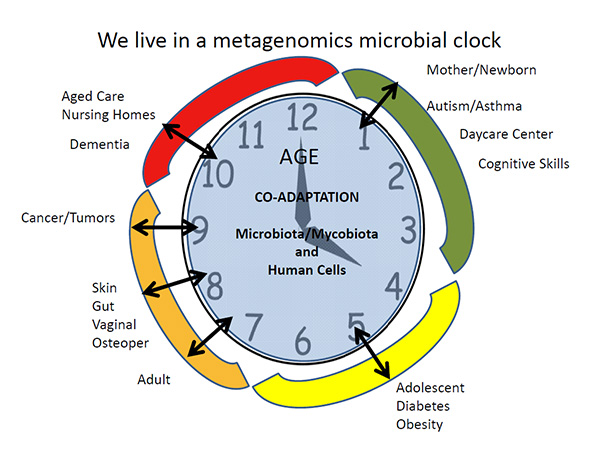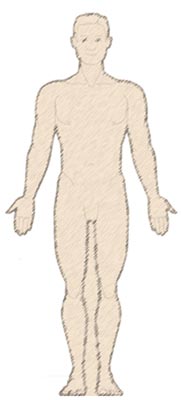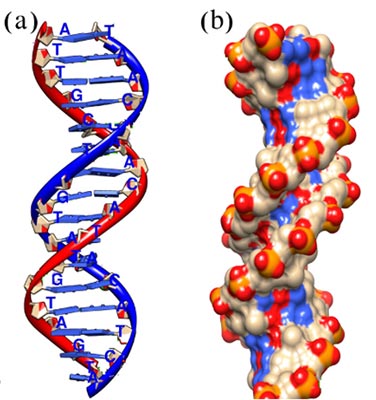

John G Thomas Ph D Professor Emeritus

"Antibiotics have been recently associated with chronic diseases highlighting aging and a microbial clock: Newborn and Childhood diseases, asthma and autism, particularly, are untoward consequences. In adolescence, mounting studies of diabetes and obesity, highlight antibiotics as suggested co ‐ factors, amplifiers or precipitators and should be used only when value of therapy has been validated. For the Aged, antibiotics are potential co ‐ factors in colorectal cancer stomach cancers (H pylori).."
National and International studies in 2007/8 unmasked the hidden microbial world of Homo sapiens and the partnering of pro-caryotes and eucaryotes, coining the new Term "Super Organism" . Additional studies highlighted the importance of this balance in disease and health , better characterized by a phyla -signature than individual species . An "Anti-Koch " theme emerged that recognized 6 Phyla versus 10,000 species in H. sapiens ,representing 8,000,000 genes, more than 230 times that of human cells and genetic strength.
Recognizing the occurance of human disease over time , we constructed a "Microbial Clock", keyed to age and diseases , focusing on organisms associated with these selected diseases highlighting an ageing population , often tumor associated . Our ultimate goal was to characterize the shift in organism population dynamics to the aging process and the potential use of "reconstructive microbiology "(Probiotics) as an eco-friendly intervention .
10 targeted Chronic Disease were selected by economic impact, potential management and age of occurance . The "Microbial Clock" was arbitrarily divided into 4 quadrants associated with 4 age groups( 0- 12 yr with a subset of new born; 12- 18 yr ,Adolescent ; 19 -55yr , Adult ; 56 yr and older , Aged, recognized by color and potential consequences ( Green, Yellow, Orange , and Red ). Microbiologic data was organized by age for : 1) human disease , 2), microbial populations by disease , 3) microbial pathogenic products , linking potential intervention by "restorative microbiology" (Probiotics) .
Targeted Diseases could be grouped by age , studying population dynamics, emphasizing the percentage of population at -risk ; diseases highlighted Autism and Athesmha, Diabetes and Obesity selected tumors /cancers and Dementia . Shifts in microbial populations could be correspondingly over-layed to these age groups, creating a 4 quad "Microbial Clock ", emphasizing a potential partnering of 26 microbes representing all phyla 6 , age and disease in 4 distinct color zones . An example was P gingivalis, which over the 4 time zones changed from normal flora (Green) to distinct dental pathogen (Orange) to tumor stimulator in colo-rectal cancer (Red), high lighting it possible role in tumorgenisis in the Aged.
Age, disease and microbes can match , forming a 4 color coded "Microbial Clock" , constructing the importance of a balanced microbiota ( phyla characterized) through age in health and unbalanced in disease . Selected microbial populations were unbalanced in selected diseases and could pose a unique target and marker in disease progression ( Bio-Marker ). The Orange and Red zone unmasked the potential mutagenisis and tumor marker for selected microbes , highlighting a microbial pathogenicity/trigger and use of eco-friendly "reconstructive microbiology" (Probiotics) in management, matched to age.
Human
A / B / O - Blood Group

Siddhartha Mukherjee - The Emperor of all Maladies: A Biography of Cancer Pulitzer Prize
Microbiota
Phyla / Family Enterotype I, II, III

